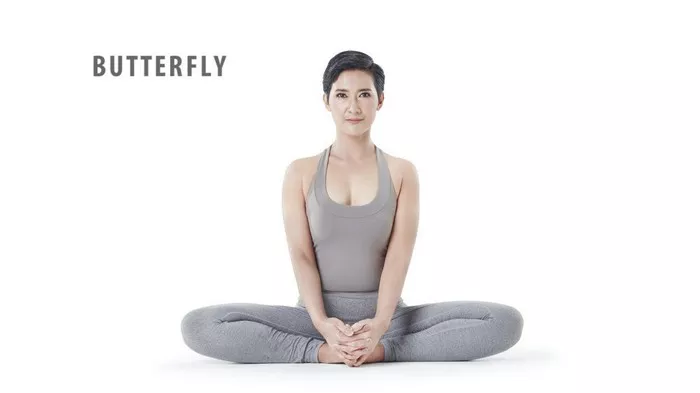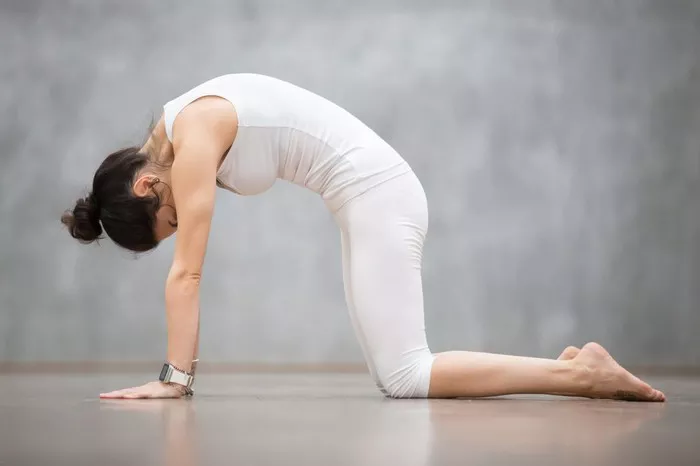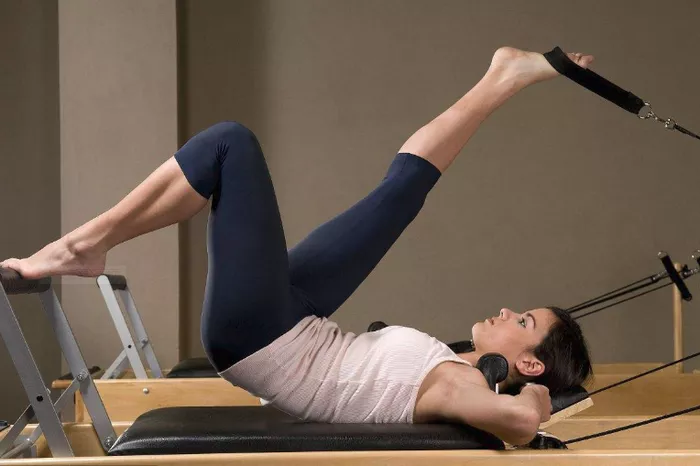Yoga, an ancient practice originating from India, encompasses a myriad of poses designed to unite the mind, body, and spirit. Among these poses is the Butterfly Pose, also known as Baddha Konasana. Its graceful posture and profound symbolism make it a staple in many yoga practices worldwide. In this article, we delve into the origins, benefits, variations, step-by-step instructions, and precautions associated with Butterfly Pose, offering a comprehensive guide for practitioners of all levels.
Origins and Symbolism
Butterfly Pose finds its roots in Hatha Yoga, one of the oldest forms of yoga, with origins dating back thousands of years. The Sanskrit term “Baddha Konasana” is derived from three words: “Baddha,” meaning bound; “Kona,” meaning angle; and “Asana,” meaning pose. Together, they describe the posture where the body forms a shape resembling a butterfly’s wings.
Symbolically, the Butterfly Pose represents transformation and the journey of self-discovery. Just as a caterpillar undergoes metamorphosis to become a butterfly, practitioners of this pose aim to undergo their own transformation, shedding old habits and beliefs to emerge as their true selves. The opening of the hips in this pose is also associated with releasing emotional baggage and finding balance within.
Benefits
The benefits of Butterfly Pose extend beyond physical flexibility and strength, encompassing mental and emotional well-being as well. Here are some of the key benefits:
1. Hip Opening: Butterfly Pose is renowned for its ability to open up the hips, groin, and inner thighs. Regular practice can alleviate tightness in these areas, improving flexibility and mobility.
2. Stimulates Abdominal Organs: The gentle compression of the abdomen in Butterfly Pose stimulates the digestive organs, promoting digestion and alleviating discomfort from conditions like bloating and constipation.
3. Relieves Menstrual Discomfort: For women, practicing Butterfly Pose during menstruation can help relieve cramps and discomfort by increasing blood flow to the pelvic region and calming the nervous system.
4. Improves Circulation: The rhythmic movement of the legs in Butterfly Pose enhances blood circulation throughout the body, nourishing cells and tissues and promoting overall health.
5. Relaxes the Mind: The meditative quality of Butterfly Pose, combined with deep breathing, induces a sense of calm and relaxation, reducing stress and anxiety levels.
6. Prepares for Childbirth: Pregnant women can benefit from practicing Butterfly Pose to prepare their pelvic muscles for childbirth, alleviate lower back pain, and encourage optimal fetal positioning.
Variations and Modifications
While Butterfly Pose is accessible to practitioners of all levels, variations and modifications can be incorporated to accommodate individual needs and enhance the practice:
1. Supported Butterfly Pose: Place a bolster or folded blanket under the knees for support, especially if experiencing discomfort or limited flexibility in the hips.
2. Dynamic Butterfly Pose: Instead of holding the pose statically, gently flap the knees up and down like butterfly wings, maintaining a steady rhythm with the breath.
3. Bound Angle Pose with Forward Fold: From Butterfly Pose, extend the torso forward over the legs, reaching the hands towards the feet. This variation intensifies the stretch in the hips and lower back.
4. Seated Butterfly Twist: After holding Butterfly Pose for a few breaths, add a gentle twist by placing one hand on the opposite knee and the other hand behind the back, rotating the torso towards the bent knee.
5. Wall Support: Sit with your back against a wall for added support and stability, especially if balance is a challenge or if you have a lower back injury.
Step-by-Step Instructions
Follow these step-by-step instructions to practice Butterfly Pose safely and effectively:
- Begin by sitting on the floor with your legs extended in front of you.
- Bend your knees and bring the soles of your feet together, allowing your knees to fall out to the sides.
- Draw your heels as close to your pelvis as comfortable, ensuring a comfortable stretch in the inner thighs and groin.
- Hold onto your feet or ankles with your hands, interlacing your fingers if desired.
- Sit up tall with your spine lengthened and shoulders relaxed, engaging your core muscles to support your lower back.
- Gently press your knees towards the floor without forcing, finding a balance between effort and ease.
- Keep your breath smooth and steady, inhaling to lengthen the spine and exhaling to soften into the pose.
- Hold Butterfly Pose for 5-10 breaths, gradually deepening the stretch with each exhalation.
- To release the pose, gently straighten your legs and shake them out before moving into the next posture.
Precautions and Contraindications
While Butterfly Pose offers numerous benefits, it may not be suitable for everyone. Take the following precautions and contraindications into consideration before practicing:
1. Knee or Groin Injury: Avoid Butterfly Pose or use props for support if you have a knee or groin injury to prevent exacerbating the condition.
2. Recent Abdominal Surgery: If you have undergone abdominal surgery, consult with your healthcare provider before practicing Butterfly Pose to ensure it is safe for your condition.
3. Pregnancy: While Butterfly Pose is generally safe during pregnancy, avoid deepening the stretch or pressing the knees towards the floor too forcefully to prevent strain on the pelvic ligaments.
4. Lower Back Pain: If you experience discomfort in the lower back, sit on a folded blanket or bolster to elevate the hips and lessen the strain on the lumbar spine.
5. Sciatica: If you have sciatica, avoid forward folding in Butterfly Pose and focus on sitting up tall to prevent compression of the sciatic nerve.
Before beginning any new exercise regimen, especially if you have pre-existing health conditions or concerns, it’s advisable to consult with a qualified yoga instructor or healthcare professional. They can offer personalized guidance and modifications tailored to your individual needs.
Conclusion
In conclusion, Butterfly Pose is a versatile yoga posture with profound physical, mental, and emotional benefits. By incorporating this pose into your regular practice and exploring variations that suit your body, you can experience increased flexibility, inner peace, and a deeper connection to yourself. Remember to practice with mindfulness, honoring your body’s limitations, and embracing the transformative journey that Butterfly Pose offers.
FAQs:
Why is butterfly pose so hard?
The difficulty of butterfly pose, also known as Baddha Konasana, can vary from person to person. Primarily, it can be challenging due to tight hip muscles and limited flexibility. The pose requires bringing the soles of the feet together while sitting upright, which can strain the inner thighs and groin if they’re not adequately flexible.
Can we do butterfly pose daily?
Yes, you can perform butterfly pose daily, especially if you’re comfortable with it and it doesn’t cause any discomfort. Regular practice can help improve flexibility in the hips, groin, and thighs, leading to greater ease in the pose over time.
Is butterfly pose good for periods?
Butterfly pose is often recommended for relieving menstrual discomfort. The gentle opening of the hips and stretching of the inner thighs can help alleviate cramps and improve circulation to the pelvic region, providing relief from period-related discomfort.
How long to sit in butterfly pose?
The duration to sit in butterfly pose can vary based on individual comfort and flexibility levels. Beginners might start with 1-2 minutes and gradually increase up to 5 minutes or longer as they become more accustomed to the stretch. Listen to your body and avoid pushing yourself too hard to prevent strain or injury.
























